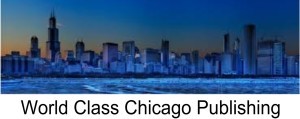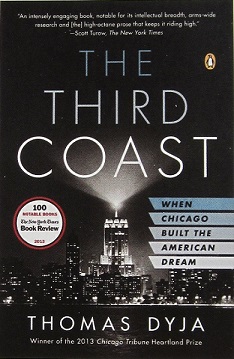Third Coast, When Chicago built the American Dream
Chicago history or more myth??
The Third Coast is a history of Chicago that purports to explain how Chicago between the end of the Second World War and the start of the Kennedy administration was instrumental in shaping the culture of America. Really! The author of the book, Thomas Dyja, grew up on the Northwest side but left Chicago for New York at age eighteen. If he is part of a tradition, then he joins the list of New York authors who try to explain Chicago to Chicagoans.
First, how credible can a book be with an illogical title. The residents of America’s gulf coast often refer to their region as “America’s third coast.” Have you ever met any Chicagoan who called their hometown “the third coast?” The universally used monikers for Chicago are “second city” and “windy city” and both were bestowed on Chicago by New York. Chicagoans don’t perceive their city as a port even though they’re cognizant that the Saint Lawrence Seaway provides Chicago and all the Great Lakes with direct access to the Atlantic Ocean. Chicago’s very existence was due to it being the logical port between the Great Lakes and the Mississippi River; yet Chicagoans still view their city not as a port but as the capital of a vast inland empire between two coasts. You need look no further than Carl Sandburg’s poem Chicago in which he forever captured the city as a hog butcher, wheat stacker, mover of railroads, a city of big shoulders but nothing about docks, ships or ports. Or as Scott Turow stated it in his review of the book for the New York Times: “…calling Chicago ‘The Third Coast’ is patronizing, implying that only seaboard cities count, worse, it badly misses the point about a metropolis whose inland location is central to its identity…”
The irony of Dyja’s tome, little noted, is that the era he claims Chicago to be culturally influencial is a time perceived as dark and degenerative. This was the time of McCarthy, red lists and the House Un-American Activities Committee. The Cincinnati baseball team changed their name from the Reds to the Red Legs just so no one would confuse them with a cell of communists. Harry Truman pulled an exhibition of abstract art from Europe because it was considered degenerative. The theater industry became known as the “fabulous invalid” as the era of theater demolitions commenced across America. It was the era of the organization man; not a time of personal expression and cultural enlightenment. The immediate post-war era was perceived as rather a dark era in America from a cultural perspective, while in Chicago another book by a New Yorker, A. J. Liebling, described Chicago as a city whose residents suffered a severe cultural psychosis who were unable to properly dress their women or buy an art work without a New York imprimatur. These were not good times, this is not what dreams are made of including the American Dream.
Dyja follows another Chicago tradition to define itself more in the fine arts than in popular culture. Poetry as an American artform was in serious decline in the second half of the twentieth century and a small group of dedicated Chicagoans centered around Harriet Monroe’s Poetry Magazine struggled to keep it alive. Still more Americans were stung by bees than read poetry, most would rather die of bee stings than listen to a poet. Dyja writes about Gwendolyn Brooks but ignores Chicago’s contributions in country music or science-fiction literature. Chicago’s boosters tend to define Chicago culture by Gwendolyn Brooks, Nelson Algren, Saul Bellow, Carl Sandburg, James T. Farrell, writers with a small readership while writers of mysteries, Westerns and Science-fiction are ignored even though they sell more books.
Dyja’s book does offer us much detail about people worth remembering but as an explanation of Chicago’s unique history or why the City never achieved the position its boosters thought it would, it is more of the same and is more myth than reality.


Leave a Reply